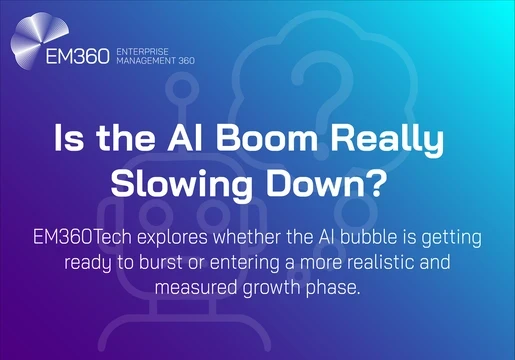Prompt engineering is a phrase that has gained popularity in the last few years due to the adoption of generative AI (artificial intelligence) models like ChatGPT and Midjourney.
There’s one main misconception about this: some think that prompt engineering is simply typing in keywords. While keywords are part of the process, they’re just one piece of the puzzle. Unsung heroes like user intent analysis and contextual relevance are just as important.
In this article, we will share eight important facts about prompt engineering. But first, let’s explain what it is and why it matters.

What is Prompt Engineering, and Why is it Important?
Let’s start with the basics: a prompt is a question, instruction, or coding that communicates with AI in order to generate your desired response.
So, prompt engineering involves crafting, testing, and optimizing questions, instructions, or coding to get the desired output from AI content generators and large language models (LLM).
For example, a prompt can be a question like “What is ?” Now, has different meanings, such as premenstrual syndrome, project management system, and private messaging service. That means the generative AI model may return different answers, as seen in the image below. Other times, the system may go with any definition - and not necessarily the one you want.
With a well-engineered prompt that provides context - in this case, “What is in an automobile?” — you’ll get a much more relevant result.
Apart from producing accurate results, prompt engineering enhances efficiency. For instance, in a time-sensitive industry like logistics, effective prompting can aid supply chain optimization by drawing on the right data the first time.
Prompt engineering also enables you to tune the AI’s responses to specific business needs or user preferences - meaning it can be helpful for training AI models that might be used by customers.
8 Important Facts to Know About Prompt Engineering
Now you know what prompt engineering is, let’s look at the facts. These should help you make up your mind about adopting it or not (we think you probably will!).
1. The quality of the input prompt influences the output
Have you ever gotten an output from a generative AI that didn’t meet your expectations? The answer is likely yes. We’ve all been let down by the result of a prompt, and the knee- reaction is to blame the system.
While that can be true - AI doesn’t know everything! - in many cases, the fault is with your input. The output of any generative AI model relies on the input, so with a better input, you’re more likely to get the results you want.
Every word counts in a prompt. A little change in words or phrases can significantly impact the outputs from the AI model. For example, “Give me tips for writing a cover letter” differs entirely from “Give me the steps to write a cover letter.” One asks for general advice, and the other asks for a step-by-step guide.
So, it’s not just about asking a question or giving an instruction. You need to phrase it to align with your intended outcome.
2. Diversity in input prompts can reduce bias
AI has a bias problem, but this can be mitigated with prompt engineering. It is possible to develop reliable and objective AI systems by incorporating input prompts that portray the diversity of the real world. This could be in terms of different age groups, genders, races, and socioeconomic backgrounds.
Incorporating input prompts that cover underrepresented demographics enables AI models to gain exposure to diverse perspectives, reducing bias. It also ensures the models have a comprehensive understanding of the intricacies of human language and behavior.
Integrating a resource like a data list can also help in this regard. Carefully curated data lists help minimize biases in language models by presenting balanced and representative examples. This contributes to more inclusive AI systems.
3. Prompts are not only text-based
Image generated from gencraft.com
Text-based prompts are the most popular, but prompt engineering can accommodate other formats. You limit your AI experience by experimenting with only text-based prompts.
Take advantage of other prompt formats to get exactly what you want. For example, to generate the image above, I used the prompt: “A picnic sunset with beautiful fluffy dogs”. If I want to then edit this, I can upload the image and request changes.
So, when you ask a generative AI model to create an advertisement for .ai domains, you can also input an image prompt to help get exactly what you want.
4. AI models can be trained to generate content specific to an existing style
The beauty of AI is that you can unlock different possibilities. If you have always admired a particular style, you can accomplish it with a technique called style transfer.
Style transfer involves training AI models to generate text, images, or speech that resembles a specific creator. It’s important to ensure you have permission from the creator before undertaking this, however.
It can be particularly useful for creating writing with a particular business style. AI models can learn the nuances of how you represent yourself in terms of vocabulary, sentence style, intonation, and other components. This does require extensive training, so make sure you have access to tools like Apache Spark and a lot of data to learn from.
It will distribute the training process across a cluster of machines. This ensures that the training job is scalable and can handle larger data sets without running into memory constraints.
5. Clarity leads to better outputs
The idea most people have about prompt engineering is that they need to use complex language to boost credibility. But that’s inaccurate. The goal is to communicate clearly, not showcase your vocabulary.
Suppose you want to know if you meet the cybersecurity maturity model certification (CMMC) cybersecurity standards. In that case, you may need a summary of findings and results carried out by your security team.
To get the best results, ask the language model, "Can you provide a summary of our organization's compliance with CMMC cybersecurity standards, highlighting key findings and results?"
This clear and direct request ensures the AI understands your specific information needs and delivers a relevant and easily understandable response.
Now, while being specific in your prompt increases the accuracy of your results, there’s also a benefit in leaving prompts slightly open-ended. This enables the model to leverage its vast training and produce useful insights you might not have considered.
6. LLMs make mistakes (hallucinations)
Free to use image from Unsplash
AI hallucination refers to a situation where a model senses patterns or objects that are nonexistent or (with context) ridiculous to human observers. This leads to absurd or inaccurate outputs.
Usually, when you make a request for a generative AI tool, you want an appropriate output that aligns with your request. However, sometimes, AI models produce outputs that aren’t part of their training, are decoded incorrectly by the transformer, or don’t follow any identifiable patterns. Therefore, it hallucinates the response.
So, verify the responses of LLMs by independently checking their response against other sources. This is especially important for industries like retail or logistics that use AI to predict future demands. For example, retail managers need to verify supply chain forecasting models to ensure the accuracy of predictions.
7. Continuous monitoring is vital in prompt engineering
Prompt engineering is not a set-and-forget. The digital landscape is fast-paced, and so should your approach to prompt engineering.
Regularly monitor the performance of your prompts. Employ data analytics to identify patterns and make data-driven changes that keep your content relevant and engaging.
8. Prompt engineering isn’t only for experts
You don’t need to be a prompt engineer to craft well-structured prompts. Prompt engineering seems daunting, but it’s a skill you can master with time and dedication. Don't be afraid to experiment and iterate. You will gradually master prompt engineering if you embrace insights from your data and are open to refining your approach.
Of course, proficiency in structured query language (SQL), particularly techniques like SQL pivoting rows to columns, can be beneficial because it enables you to efficiently structure and process datasets - meaning you can be involved in the process at a much earlier stage.
So what next?
Prompt engineering is a constantly evolving field that requires strategy and creativity. These eight important facts will enhance your understanding of this discipline and help you produce unique content.
Remember, there is no cookie-cutter approach to prompt engineering. If applied with dedication and insight, it is an evolving field that can yield remarkable results.







Comments ( 0 )